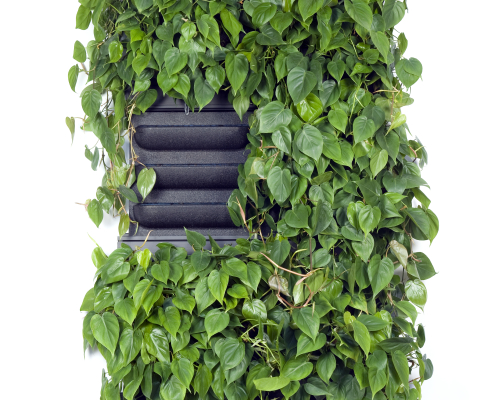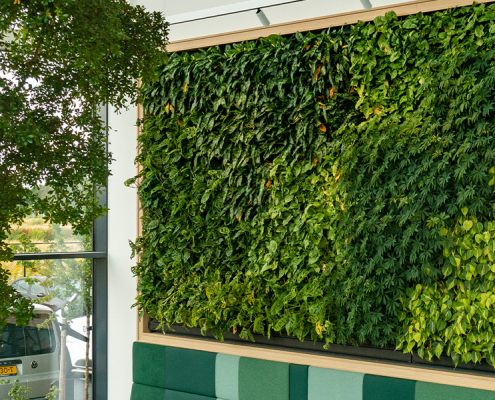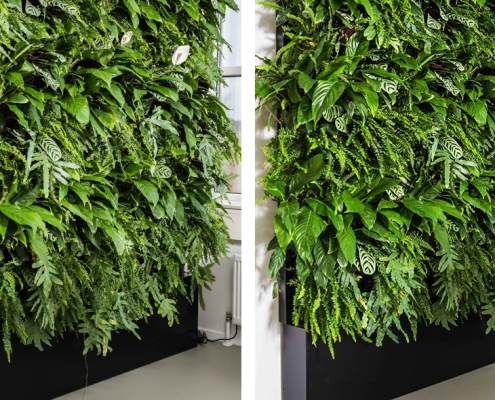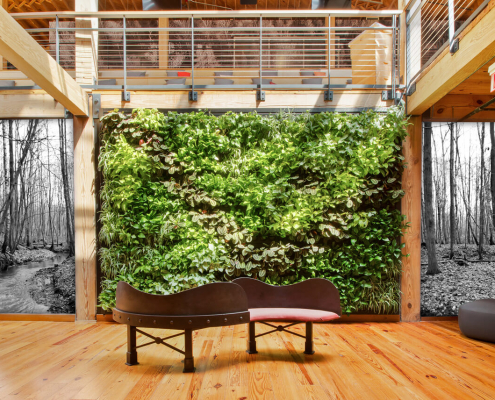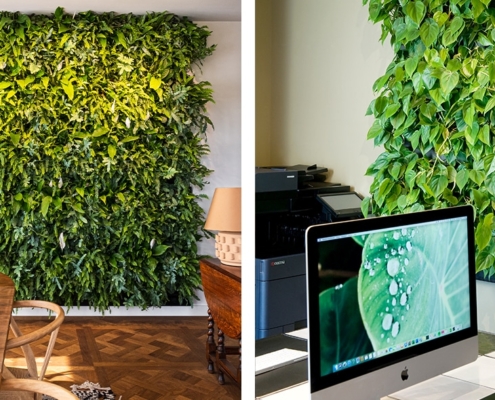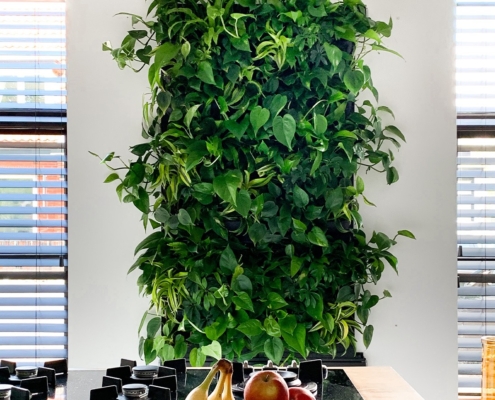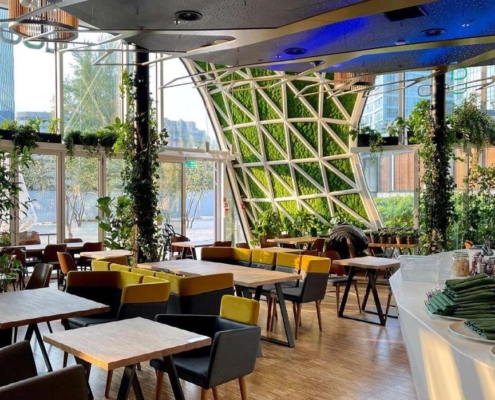Vertical garden
Vertical garden is a revolutionary way to create a space full of greenery, even in the most limited conditions. It involves growing plants in a vertical plane - on the walls of buildings, fences or specially designed structures. It is the perfect solution for those who want to enjoy nature but do not have enough space for a traditional garden.
A vertical garden - what is it and why should you have one?
Vertical garden, also known as a green wall, is a structure that allows maximum use of space, making it ideal for small flats, balconies, as well as commercial spaces. Thanks to its form, the vertical garden can be mounted on walls, fences and also on dedicated modular systems, making it extremely versatile.
One of the key advantages of this solution is space saving - vertical gardens make it possible to create a garden even in spaces that would not normally be used for growing plants. The ability to grow plants vertically instead of in the traditional way opens up new perspectives for people who dream of gardening but do not have a large space.
Benefits of vertical gardens
Space-saving
Vertical gardens are an ideal solution in cities where space is limited. By utilising space on building walls or fences, we can create an aesthetically pleasing garden without the need for a large plot of land. This is particularly valuable in blocks of flats where there is a lack of traditional space for beds or flowerbeds.
Aesthetics and modern design
A vertical garden can completely transform the look of a space. A green wall brings a natural element to an urban landscape or modern interior, giving it a unique character. With a variety of plants of different colours, textures and heights, complex, creative compositions can be created to decorate all year round.
Environmental benefits
Plants in a vertical garden have many ecological advantages. Firstly, they improve air quality by filtering pollutants and providing oxygen. Secondly, green walls have an insulating function - helping to regulate indoor temperatures, which can reduce energy consumption for heating or cooling buildings.
Efficiency and time savings through automatic watering
Vertical gardens are increasingly being equipped with irrigation systems that automatically deliver water to the plants. As a result, owners of vertical gardens do not have to worry about daily watering and the plants are properly watered throughout the year, ensuring healthy growth.
Green walls are not just about aesthetics, but also an important part of improving urban biodiversity. The most important factor influencing their capacity and ecosystems is the soil - it provides a natural habitat for plant growth, which is crucial for bee populations, water retention and plant resistance to harsh weather conditions.
At Green Facades, we rely on natural soil to provide a stable environment for plants. Compared to hydroponic systems, which require artificial feeding of water and nutrients, natural soil guarantees healthy plant growth, greater resilience, as well as long-term solutions. The soil is also responsible for better protection of the plants' roots, ensuring their survival, even if the irrigation system fails.
Unlike rope systems, which rely on climbing plants and require years for the plants to become well established, our green walls based on natural soil allow for quick visual impact, as well as a greater variety of plants and creativity when designing shapes or lettering on the walls.
With these solutions, we offer not only aesthetic but also functional vertical gardenswhich support biodiversity and contribute to environmental protection.
Who is a vertical garden for?
A vertical garden is a solution for a wide range of people and spaces:
- Urban residents - In large cities, where space is limited, a vertical garden is a great solution. Vertical gardens can take hold on balconies, building walls, terraces and also in public spaces, creating greenery where it would normally be difficult to place it.
- Plant lovers - People who are passionate about plants but do not have a large space for a traditional garden can enjoy plants in a vertical space. Ornamental plants as well as herbs or vegetables can be grown in such gardens.
- Environmentalists - A vertical garden is an ideal option for those who value eco-friendly solutions. Plants improve air quality, help fight smog and have thermoregulatory properties that can help reduce a building's energy consumption.
- Companies and restaurants - Green walls are increasingly being used in commercial spaces. Restaurants, offices, cafés and hotels that want to add a unique touch to their interior can use a vertical garden as an attractive decorative element.
How to care for a vertical garden?
Caring for vertical garden depends on the system chosen and the type of plants. Here are some tips:
- Plant selection - Plants should be appropriately selected for the conditions in which they will grow - for example, shade-loving plants for indoors and those preferring sun for outdoor gardens.
- Irrigation - Regular watering is the key to success. The easiest way to do this is with automatic watering systems that deliver water in the right amounts and at the right times of day.
- Plant pruning - Regular removal of dry leaves and shoots allows the plants to thrive better and maintain the aesthetic appearance of the vertical garden.
A vertical garden is the perfect solution for those looking for a space full of greenery in cities and homes. It can be both a functional and decorative part of any space, which not only introduces greenery but also improves the quality of life.

